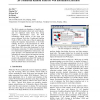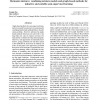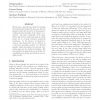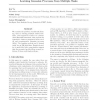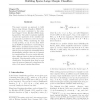116
Voted
ICML
2005
IEEE
16 years 1 months ago
2005
IEEE
It is common in classification methods to first place data in a vector space and then learn decision boundaries. We propose reversing that process: for fixed decision boundaries, ...
122
Voted
ICML
2005
IEEE
16 years 1 months ago
2005
IEEE
The Web contains an abundance of useful semistructured information about real world objects, and our empirical study shows that strong sequence characteristics exist for Web infor...
122
click to vote
ICML
2005
IEEE
16 years 1 months ago
2005
IEEE
Graph-based methods for semi-supervised learning have recently been shown to be promising for combining labeled and unlabeled data in classification problems. However, inference f...
117
click to vote
ICML
2005
IEEE
16 years 1 months ago
2005
IEEE
Despite of the large number of algorithms developed for clustering, the study on comparing clustering results is limited. In this paper, we propose a measure for comparing cluster...
102
Voted
ICML
2005
IEEE
16 years 1 months ago
2005
IEEE
We propose a general framework for learning from labeled and unlabeled data on a directed graph in which the structure of the graph including the directionality of the edges is co...
117
Voted
ICML
2005
IEEE
16 years 1 months ago
2005
IEEE
Naive Bayes is an effective and efficient learning algorithm in classification. In many applications, however, an accurate ranking of instances based on the class probability is m...
117
Voted
ICML
2005
IEEE
16 years 1 months ago
2005
IEEE
We consider the problem of multi-task learning, that is, learning multiple related functions. Our approach is based on a hierarchical Bayesian framework, that exploits the equival...
126
click to vote
ICML
2005
IEEE
16 years 1 months ago
2005
IEEE
We apply nonparametric hierarchical Bayesian modelling to relational learning. In a hierarchical Bayesian approach, model parameters can be "personalized", i.e., owned b...
104
Voted
ICML
2005
IEEE
16 years 1 months ago
2005
IEEE
This paper presents an approach to build Sparse Large Margin Classifiers (SLMC) by adding one more constraint to the standard Support Vector Machine (SVM) training problem. The ad...
109
Voted
ICML
2005
IEEE
16 years 1 months ago
2005
IEEE
The detection of faces in images is fundamentally a rare event detection problem. Cascade classifiers provide an efficient computational solution, by leveraging the asymmetry in t...

